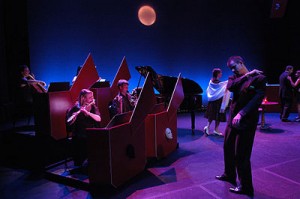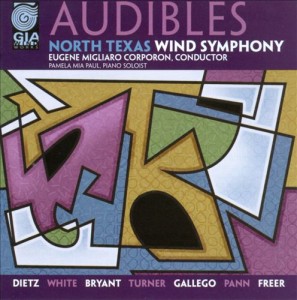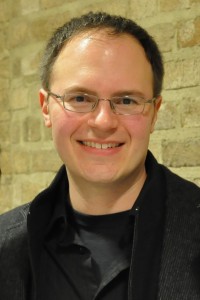We’re looking for a WordPress genius to help us update Sequenza21 by cleaning out the crawl space and attic, adding some new wiring and plumbing, attaching the garage to the main house, making the family room a more fun place to hang out and talk and to bring in a new Wolf oven and SubZero fridge. Ok, my recent conversion to home mortageship has addled my brain a bit. What we want to do is make S21 more social and interactive, clean out the spam and cut down the archives, combine what is now four separate WP instances (main, forum, CD reviews, and calendar) into one unified whole, maybe reskin add a web commerce capability. We can pay you something for the initial work and a modest retainer for being on call. Also, we’ll give you masthead credit and promote the hell out of your next concert or CD. Send a us a note if you’re interested.

Last Tuesday, April 16, I trekked to Snyder Hall on the campus of Michigan State University in East Lansing, MI to see a performance by the Musique 21 ensemble, an immersive ‘Theatre of Music’ Production entitled Drunken Moon. The piece was conceived and created by conductor Kevin Noe and composer Kieren MacMillan, and features the merger of MacMillan’s eponymous monodrama for two voices with an English version of Arnold Schoenberg’s legendary Pierrot Lunaire.
Drunken Moon is more than a concert performance, it is a theatrical unfolding where the music and storyline are deeply intertwined and overlap on many occasions. I chose the descriptor ‘immersive’ deliberately, because Drunken Moon is more inviting to its audience than standard chamber operas. This is the touch of Kevin Noe, who has become renowned for his innovative programming with the Pittsburgh New Music Ensemble. In fact, Drunken Moon began as a PNME production, one of that group’s many fully staged programs, which push the boundaries of traditional concert presentation to create an audience experience that is undeniably memorable and powerfully meaningful.
Even though he was armed with students from MSU’s College of Music, Maestro Noe’s designs hit their mark Tuesday night. The show began immediately as the audience entered the theatre, in that the performers and actors were dancing, drinking and chitchatting in an imagined bar, ‘La fin bleu’, set up on the stage. Walking in on the onstage commotion like this set a refreshing and relaxing tone, at least compared to the prescribed ceremony of most Classical or Contemporary music concerts. Although the ‘Fourth Wall’ was not manipulated to any extreme, the attitude of the performance made observing Drunken Moon feel like being a part of it in some small way.
The intimate audience experience I enjoyed Tuesday night was not only a product of the small theater, sets, costumes, lighting and music. My compatriots in the audience and I were drawn into the performance by the stellar acting and singing of soprano Lindsay Kesselman and baritone Robert Peavler who brilliantly portray the main characters in Drunken Moon – dubbed only “she” and “he”. The couple’s interaction is the focal point of the performance’s narrative and the link that connects MacMillan’s Drunken Moon with Pierrot Lunaire.

American composer Steven Bryant has recently contributed a beautiful new piece to the piano-and-winds repertoire. Commissioned by pianist Pamela Mia Paul, Bryant’s Concerto for Piano was recorded for the GIA Wind Works label, as part of a new disc entitled Audibles. The performers are Paul and the North Texas Wind Symphony, conducted by Eugene Migliaro Corporon.
Concertos for piano and wind instruments are a rare breed. The twentieth century produced only a handful of them, the most famous being Stravinsky’s Concerto for Piano and Wind Instruments (1923-24, revised 1950). Shortly after Stravinsky, Colin McPhee wrote Concerto for Piano and Wind Octet in 1928. In 1943 Henry Cowell composed Little Concerto, for piano and band, and George Perle contributed Concertino for Piano, Winds, and Timpani in 1979. More recently additions to the genre include the Norwegian composer Mark Adderly’s Triptych for Solo Piano, Orchestra of Winds and Percussion (1988), and Concerto for Piano and Wind Instruments by Kevin Volans (1995). Bryant’s compelling work is likely to become a well known member of this lesser known genre.

Bryant explains that the two contrasting movements of the concerto are constructed from the same set of descending dyads. The first movement begins in wistful, contemplative simplicity, slowly unfolds, reaches towards its triumphant and spirited zenith, and then recedes again. The arc structure of the movement is elegantly punctuated by a shift from descending to ascending motion at the halfway point. The second movement, with its running sixteenth notes and playful syncopated rhythms, is a display of virtuosity for soloist and ensemble alike. In both movements Bryant uses the concise material to develop music that is thematically cohesive, rhythmically compelling, and filled with timbral beauty. Paul’s performance is clear, powerful, and supportive of the compositional structure.
Also included on the disc are compositions by Brett William Dietz, Donald White, Jess Turner, Francisco Jose Martinez Gallego, Carter Pann, and Justin Freer. Audibles is available on Amazon and also at www.giamusic.com.
Listen to Steven Bryant’s Concerto for Piano
 Who wants a pair of tickets to coLABoratory: Playing It UNsafe at Zankel Hall on Friday night? This is an ACO project described as the first and only professional research and development lab to support the creation of cutting-edge new American orchestral music through no-holds-barred experimentation. The composers participating in coLABoratory this season are selected from a national search for their willingness to experiment and stretch their own musical sensibilities, and their ability to test the limits of the orchestra. More info here.
Who wants a pair of tickets to coLABoratory: Playing It UNsafe at Zankel Hall on Friday night? This is an ACO project described as the first and only professional research and development lab to support the creation of cutting-edge new American orchestral music through no-holds-barred experimentation. The composers participating in coLABoratory this season are selected from a national search for their willingness to experiment and stretch their own musical sensibilities, and their ability to test the limits of the orchestra. More info here.
If you’ve already liked our Facebook page, leave your name and a contact e-mail here before noon on Thursday. If you haven’t liked the Sequenza21 page, leave you name over there. If you’re from out of town, you can give me to local friends if you like. On Thursday afternoon, my trusty dog and I will choose a winner.